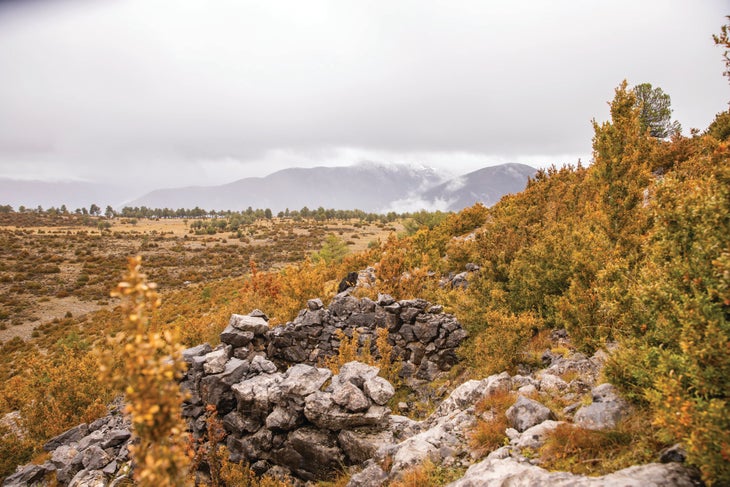Heading out the door? Read this article on the new Outside+ app available now on iOS devices for members! Download the app.
My photos from hiking trips are largely the same: Peak, alpine lake, valley view, maybe the odd sweaty-but-happy group shot. The locales may differ, but the subject matter rarely does.
But take a look at my pics from a weeklong trek in the Pyrenees, and there’s a clear difference. Interspersed with shots of craggy mountains and cliffside ruins, there’s food. Loads of it: Table-filling spreads of charcuterie and cheese. Meat roasting in an open hearth. Wine labels galore.
If you’ve become accustomed to the Clif Bar-and-dehydrated-chili routine that defines backcountry eating stateside, it’s easy to assume that’s the way it has to be. But there’s a better way. Much better. Our trip in Catalonia was as much a feasting tour as a walking one, and it started on the first night. In Aigüestortes i Estany de Sant Maurici National Park, after a 7.8-mile hike over an alpine pass and past cerulean lakes, we arrived at Refugi d’Amitges to plates full of crusty bread, perfectly crisped roast chicken, and two bottles of a velvety red from Costers del Segre, a Catalonian wine denomination. I could get used to this, I thought later as I succumbed to food coma in my bunk.
“Used to this” might be an understatement. More accurately, I’ve been ruined to standard hiker food, which I used to rave about. Catalonian custom, especially in the small mountain towns we stopped in, calls for welcoming trail-weary guests and making them comfortable. Catalans have had hundreds of years to perfect their hospitality, and they’ve settled on a killer formula: a menu best described as gourmet farmer food and a crackling fire to enjoy it by.
In Llagunes, a town that’s stood for a millenium, the hostess at the Refugi Vall de Siarb taught us to rub garlic into the morning bread and then cover it with fresh tomato paste. We followed that up with a full-day trek that brought us to the hilltop ruins of a Bronze Age settlement, through pasture lands, and up to a windswept ridge.
In the Refugi di Cuberes, another day’s walk away, we devoured a dinner of potato-and-egg soup followed by perfectly grilled sausages, and ended the meal with a hand-bottled digestif made with local herbs. It was the perfect complement to hours spent winding our way down shepherd’s paths, among cattle, and through tiny stone villages.
I like to think I’m richer for any outdoor time I get. But after hiking through Catalonia, I’m heavier than when I started, too.
Guide Says

The trenches aren’t that far apart. We could see where soldiers removed skull-size rocks with hand tools to dig into the hillside outside a small church and do battle with their countrymen. In the late 1930s, Catalonian separatists fought valiantly but lost to the dictator Francisco Franco, our guide Jordy says. The land still bears the scars of hastily made positions as both sides ground out a battle front that never seemed to shift more than a few meters. It was a tragic chapter in local history, but Catalans still take pride in their defense of their homeland.
